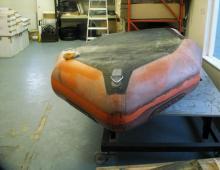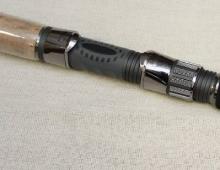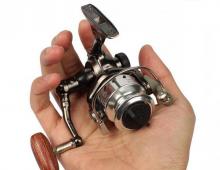best anchor for pvc boat
The fact that an anchor is a necessary, useful and necessary thing, from experience or hearsay, is known to everyone who at least once went out, goes out or is just about to go out on the water. Water motorists who have a small boat subject to mandatory registration with the GIMS, and who have completed the relevant courses to obtain a certificate confirming the right to drive it, know that the anchor is included in the list of equipment that any small boat must be equipped without fail.
But a PVC boat anchor is not an accessory that you can buy just because its owner just liked the way it looks. The anchor on the boat must work out at 100%, and not only successful fishing depends on it, but most importantly, the safety of being on the water. But it has long been known that water does not forgive mistakes and can sometimes very severely punish someone who is not serious about choosing accessories for his boat.
It is now possible to purchase anchors of almost any shape and type in specialized stores, but such a variety was not always there, and even to this day you can find originals on the water using the most incredible objects instead of anchors. So, the author has personally seen the following items used on small boats instead of an anchor: a neck from a rod, a crankshaft, brake discs, an old electric motor. And this is not counting the living classics like cobblestones and bricks wrapped with rope, tracks from a tractor caterpillar and drilled pieces of rails. And the most impressive, in my opinion, exhibit in this crazy collection of anchors was the flooded outboard motor "Vikhr-25". However, as its owner later honestly admitted, this was done rather out of hopelessness, since all his attempts to make this unit work at least somehow ended in a complete fiasco, and after one of them the motor was mercilessly turned into a “dead” anchor (dead is called anchor, which is constantly flooded in one place) and serves for mooring the boat, now equipped with an outboard outboard motor of imported production.
So, why do you need an anchor on a boat at all?
The answer to this question must be sought in the history of navigation. Even the ancient Greeks learned the lesson well that a ship that lost its sail in a storm became uncontrollable and turned out to be an easy toy for wind and waves. As a rule, the finale in this situation was very predictable, and the Phoenician, Greek or Roman sailors caught in a storm in horror had only one thing left to wait - when their trireme would break on the coastal rocks. In such cases, there was hope only for the “sacred anchor” - the largest and heaviest of all those on the ship, by lowering which the sailors could wait out the storm in relative safety. That is why anchors were revered, anchors were prayed for, and finally, anchors were expensive. Traces of anchor worship can be found even in Christianity. So in Greek, the anchor is called "Soter", which means nothing more nor less than "savior". Moreover, until 300 AD. e. on Christian tombstones you can see images of anchors. 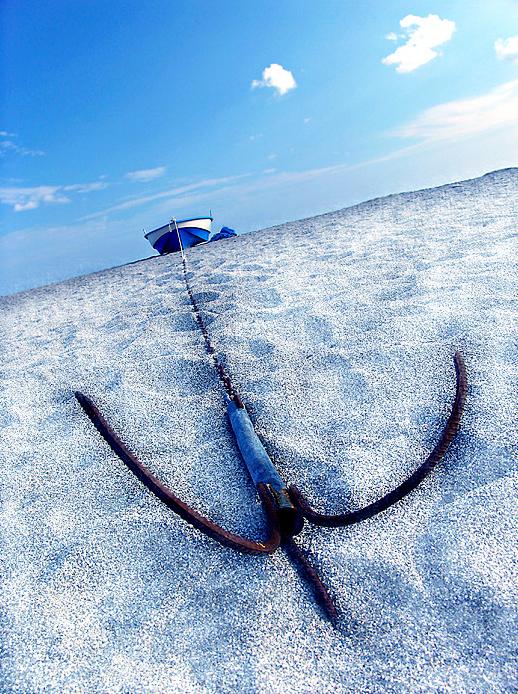
Now it is difficult to imagine a modern water motorist who would earnestly pray to his anchor. Although the cases are different, and here the main role begins to play not the size and weight of the anchor (although these are also very important indicators), but its correct choice. After all, the main task of any anchor has been and remains unchanged - at any cost to keep the ship in one place.
For small boats, there are two main ways to select an anchor, each of which is based on the parameters of the boat.
1. The mass that the ship can hold is taken as a reference point. In this case, the weight of the anchor depends on the displacement of the boat and must be at least 10% of the total weight. For example: a vessel with a displacement of 250 kg must be equipped with an anchor, the weight of which must be at least 2.5 kg. However, this method of calculation is more suitable for displacement ships with a rigid hull. For inflatable boats, due to their specific characteristics, the following method is more suitable.
2. The length of the boat is taken as a reference. And in this case, the following formula applies: anchor mass = 1% of the total length of the boat. Thus, a boat 300 cm long must be equipped with an anchor weighing at least 3 kg.
But this statement is only partly true. The fact is that the holding power of any anchor depends not only on its own weight, but also on its shape and the type of bottom on which it will be used. So, if we use an anchor on a sandy or muddy bottom, then the statement “a meter of a boat = a kilogram of anchor” will be true, since the legs of the anchor will enter the ground and thereby securely fix the position of the boat (provided that we have exactly an anchor, rather than smooth stone or brick, for which the holding force would be measured as approximately one meter of the length of the boat per 5 kg of weight minimum). At the same time, if we throw the same anchor on a rocky bottom, then the boat will be demolished until it catches its paw on some obstacle.
Thus, in addition to the weight itself, when choosing an anchor, its future owner will have to decide on other parameters and answer the following questions:
— On what type of bottom will the anchor be most often used? It can be silt, sand, stones or something else, depending on the characteristics of the region.
- The presence or absence of a current in the reservoir where the anchor is supposed to be used.
- On an open or closed reservoir, will you most often need to anchor? This is important in order to take into account the influence of wind and other weather conditions. In particular, what happens more often in places of intended use is calm or it can be a stormy state.
Only after answering these questions, you can begin to choose the type of anchor that is most suitable for certain conditions. After all, you need to be aware that there are no universal solutions and each type of anchor, winning in one thing, can lose in a number of other positions.
Below we will look at the most common types of anchors on sale and talk about the specific features of each of them.
Anchor "Cat"
This anchor can rightfully be considered the most versatile and adapted for use on small boats, since, when used correctly, it holds perfectly on almost all types of bottom surfaces, from sandy to rocky. The folding design provides convenience during transportation and storage and the ability to quickly bring it to working condition. Also, anchors of this type can be used as a means to search for and raise sunken objects by trawling.
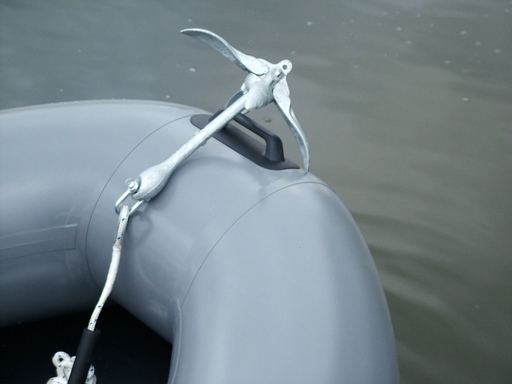
A unique feature of collapsible cat anchors is their ability to self-release in the event of a snag on any object on the bottom, from driftwood to the hulls of sunken ships and cables or cables laid along the bottom. But in order to take advantage of this useful opportunity, the main anchor attachment point must be made not for the upper, but for the lower ring, located under the folding paws. In this case, the chain or cable is not passed through the ring located at the top of the anchor spindle, but simply fixed on it with a plastic clamp, a loop of fishing line or any other available material. In the working position, the anchor turns out to be fixed to the spindle ring, but in the event of a hook, with the help of a sharp jerk, the fastening loop breaks, the anchor turns over with its paws down and is released from the hook.
Anchor Hall (Matrosov) and its modifications
The Hall anchor and its modifications are considered optimal for use on sandy and pebble soils. The principle of operation of this anchor is very simple: having fallen to the bottom, it lies flat and when the cable tied to it stretches and stretches it, the lower tide of the paws clings to the ground, forcing the paws to turn and pick up the soil with the blades. For the best use of this anchor, it is necessary to fasten it first to a chain a meter and a half long and only then to a cable or rope.
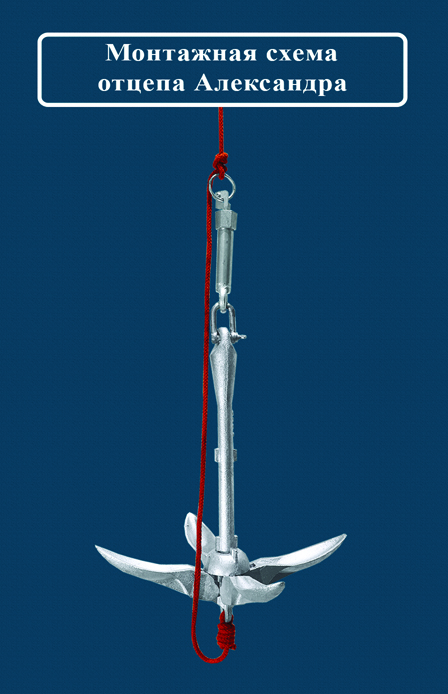
The Hall anchor and its modifications are considered optimal for use on sandy and pebble soils.
These anchors are excellent for equipping inflatable boats from 3.5 m long and small boats with a rigid hull. In order to anchor this type faster, it is recommended to give it up while the ship is still moving, and not standing still.
mushroom anchor
These anchors have very good holding power and were originally used to anchor ships in areas with strong winds and currents. But best of all, mushroom anchors are worked out on a sandy or muddy bottom, which has a sufficient degree of viscosity.
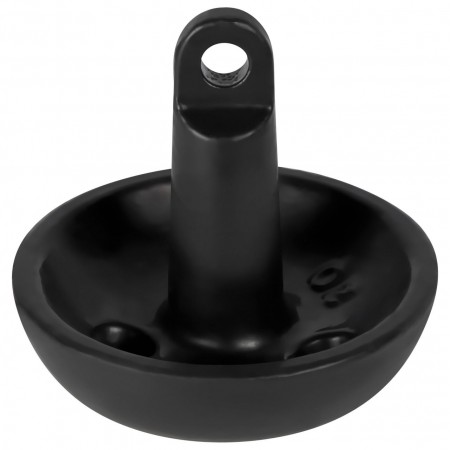
These anchors have very good holding power.
The advantages of these anchors include small size and design, which almost completely eliminates the possibility of hooking on underwater obstacles in the form of snags, snags and other underwater troubles, the hook on which can lead to the loss of the anchor. In an inflatable boat, they do not take up much space and are convenient because they do not have sharp corners, and they are also easily cleaned from adhering bottom soil.
- The length of the cable or rope for which the anchor is attached must be at least five times greater than the depth under the boat.
- To ensure better and faster adhesion of any type of anchor to the bottom soil, it is recommended to fasten it not to a cable or rope, but to do this through a piece of metal chain a meter and a half long.
- In order to anchor reliably under any conditions, whether it be wind, waves or current, it is best to have two anchors on board the boat, the main and the auxiliary. The main anchor must be selected according to the length and weight of the boat. The auxiliary anchor may have a smaller mass, but not less than half of the mass of the main anchor. If it becomes necessary to stop, the heavier main anchor is released from the bow, and the auxiliary anchor from the stern of the boat.
- If there is a need to slow down the movement of the boat in a strong current or wind, and there is no anchor on board or it cannot catch on the ground and it needs help to do this, then you can use the so-called "floating anchor". For its manufacture, any object with positive buoyancy and a large area can be suitable. It can be a piece of tarpaulin, a raincoat, or even branches of deciduous or coniferous trees cut down from foliage, which are attached to the side of the boat with ropes or a cable. Of course, this simple and uncomplicated device will not completely stop the boat, but nevertheless it will significantly reduce its speed.
Anchor retriever Alexandra
 This device appeared in 2016 and immediately attracted the attention of fishermen. It offers an original engineering solution to a fairly common problem - releasing a hooked anchor from the water.
This device appeared in 2016 and immediately attracted the attention of fishermen. It offers an original engineering solution to a fairly common problem - releasing a hooked anchor from the water.
Otsep Alexander uses the “weak link” principle as the most popular and effective way to change the direction of the thrust force when raising the anchor. Alexander's anchor uncoupler (in fact, the uncoupling mechanism) just performs the function of this “weak link”.
The developers managed to create a simple, convenient, reliable and durable tool that can be used with any type of anchor. Once anchored, it does not require any more maintenance, does not change the usual technology for using the anchor, and only works automatically when hooked. Easily and quickly brought to its original position and ready for reuse. The number of triggers is not limited.
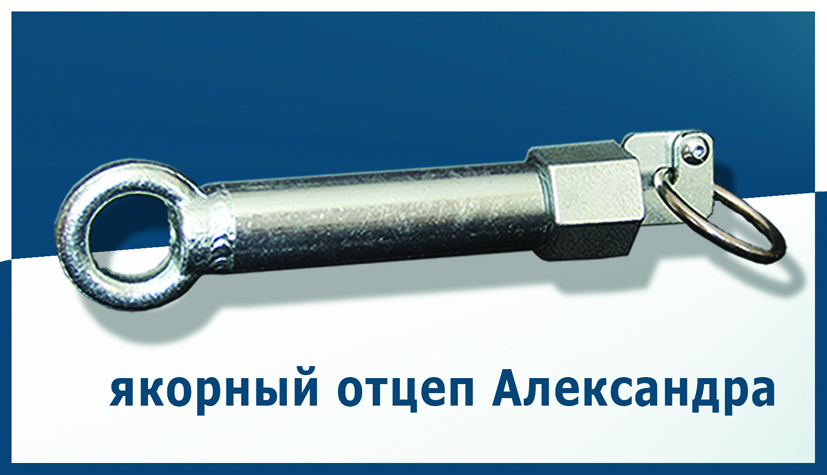
Otsep Alexander is available in two modifications, and depending on the installation scheme, the response thresholds arefrom 20 to 60 kg, which is more than enough forany small boats with manual lifting of the anchor.
Otsep Alexander- this is our reliable protection, which will help save not only money (which is important), but also time and nerves. This is a guarantee of peace and confidence on the water.

